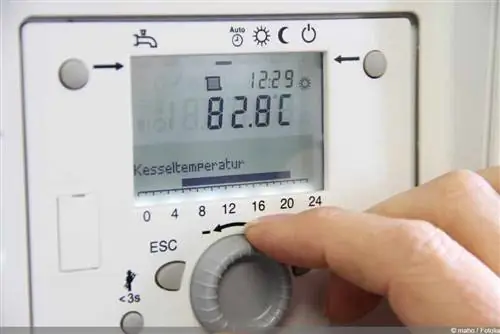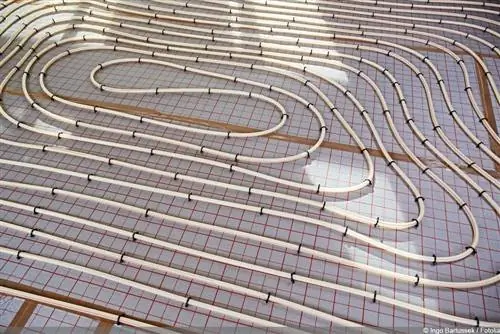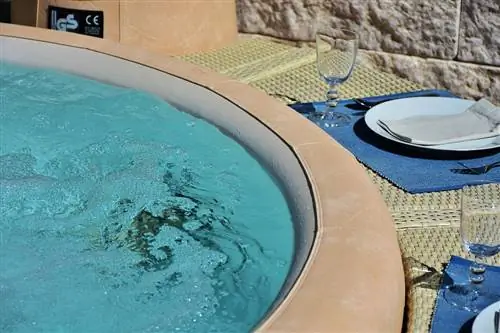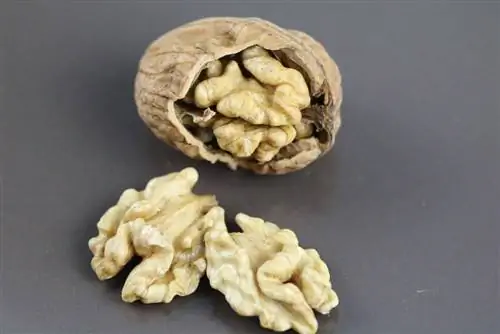- Author admin [email protected].
- Public 2023-12-17 03:39.
- Last modified 2025-06-01 06:48.
The heat output of underfloor heating can be limited by sludge, rust and air or gas bubbles. Despite the highest setting, the rooms no longer get (really) warm. Therefore, sooner or later everyone faces the question of when and how often the underfloor heating should be flushed. However, this question can only be answered if a few factors are taken into account.
Type of lines
How often it makes sense to bleed and flush the heater depends primarily on the type of pipes. Until around 1990, iron pipes were primarily used. These are permeable to oxygen and are therefore more susceptible to corrosion, deposits and siltation. Therefore, cleaning every two to four years makes sense if venting alone is not enough.
Modern underfloor heating systems, on the other hand, use plastic pipes. These are diffusion-tight, meaning no oxygen can penetrate. This means that cleaning every five years is usually sufficient.
Needs
Flushing or venting the heater always makes sense when the heating output decreases or there is evidence of trapped gas bubbles and constrictions in the pipes. Possible signs of this include:
- Rooms no longer get really warm despite the highest heating output
- the heat is distributed unevenly
- the raw ones make noises like gurgling or clicking
The lack of heat and possibly noise are not only unpleasant, but also indicate a loss of energy and the associated costs. Raw materials are consumed without achieving targeted heat development. In addition, the problems listed can not only indicate inclusions of oxygen and deposits, but can also result from leaky pipes and damage to individual components.
Restrictions should therefore be investigated quickly in order to prevent potentially costly damage.
Type of conditioner
Flushing the underfloor heating can be done in two basic ways. In principle, however, the preparation is always the same and consists of the following steps:
- If the problems only occur in a limited area, the heating circuit in question is initially closed. To do this, it must be known which valves supply which heating circuit.
- A water hose is connected to the input and output of the heating circuit. A hose represents the connection between the heating circuit and the tap. A hose serves as a drain for the sludge.
- The water is introduced and flushes the pipe, removing smaller deposits. The water pressure corresponds to the pressure of the tap. Stuck and larger deposits are therefore not removed.
- The flushing will stop when the water that comes out remains clear.

If this type of flushing is not enough to solve the problem, a combination of a flushing compressor and chemical agents can be used.
The procedure is as follows:
- In preparation, a chemical cleaner is introduced into the relevant heating circuit. This loosens dirt that has stuck for days.
- After the deposits have been chemically dissolved, a flushing compressor is connected instead of a hose between the tap and the heating circuit.
- Thanks to the high water pressure and the preparatory loosening, even heavier dirt can be removed.
- The flushing stops again when clear water comes out of the drain hose. To protect against further stuck deposits and sludge, a chemical softener can be added to the water, which has a preventive effect.
Potential risks
Especially when using a flushing compressor, the heating is cleaned with comparatively high water pressure. On the one hand, this is necessary to loosen the deposits. On the other hand, it can also cause damage to existing weak points. This means that both specialist knowledge and sensitivity are required when cleaning through compression.
In addition, a decreasing heating output can also be due to existing damage. In these cases, flushing - especially with high pressure - could make the damage even worse. In order to recognize such problems, specialist knowledge and a careful approach are required.
Hire a professional or clean it yourself?
Having underfloor heating cleaned by a specialist is advisable for several reasons. These include:
Comprehensive specialist knowledge and proper execution
It is comparatively easy for a layperson to identify which heating circuit is affected. However, recognizing the associated valves, connecting them specifically and venting the lines if necessary requires a little more knowledge and caution.
Early detection of problems
Is it a deposit or gas bubbles? Is there perhaps even a leak? Specialists can recognize problems and difficulties as well as the type of cables more quickly than laypeople. This can keep costs down and prevent more serious damage.
Less effort
The steps for flushing the heater are simple in themselves. However, due to the separation of the individual heating circuits and possibly several necessary flushes, the effort is significantly higher than the individual steps initially suggest. If this work is carried out by a specialist, your own effort is kept to a minimum. In addition, damage can be repaired more quickly if problems continue to occur and the causes are unclear.






